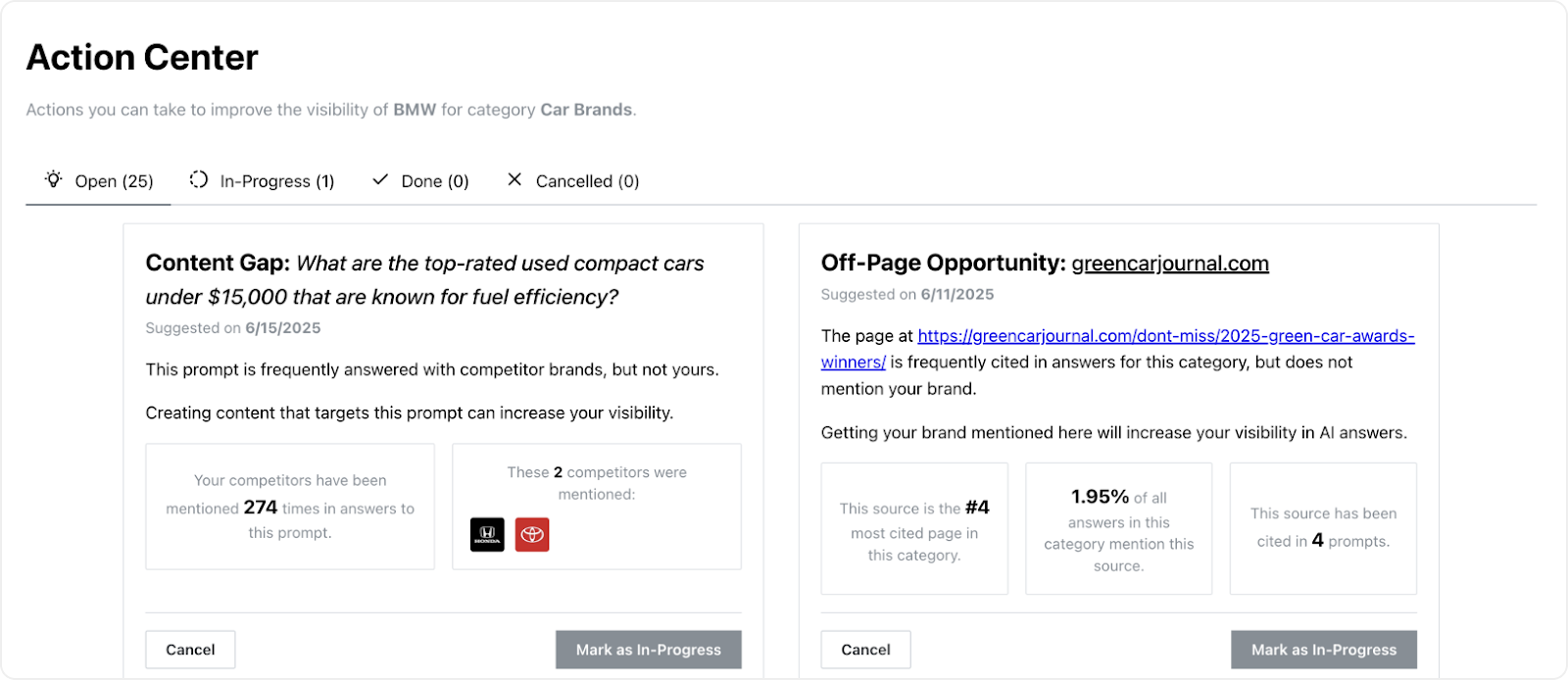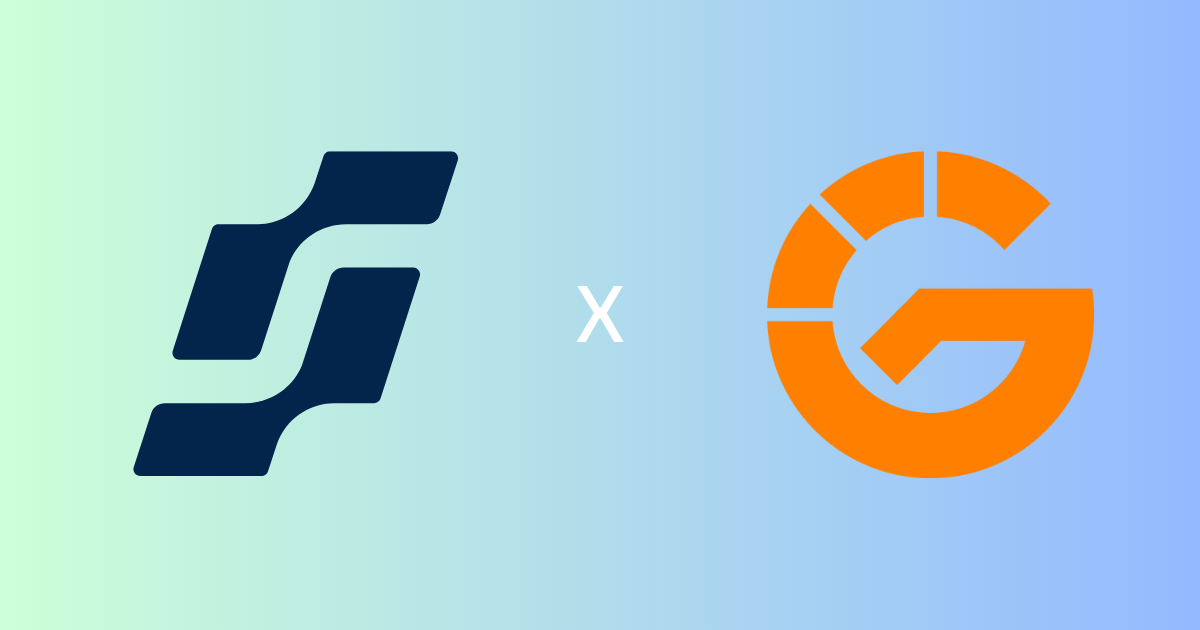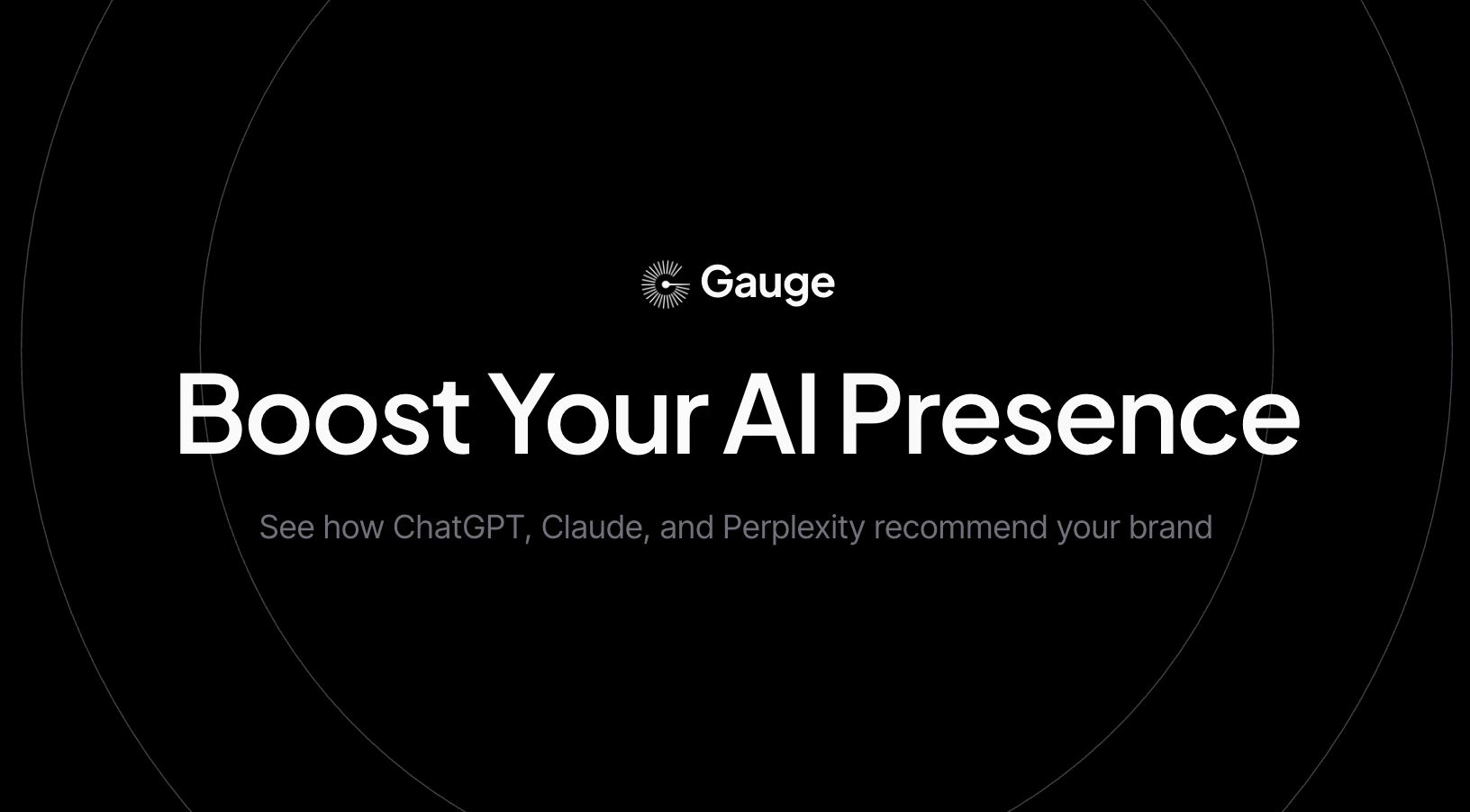
Search is changing. For years, brands obsessed over SEO rankings: build authority, land in the top three results on Google, and drive traffic.
But with AI search, the rules are different. Large Language Models (LLMs) like ChatGPT, Gemini, and Perplexity can scan 50 or 60 sources at a time and synthesize them into a single, conversational answer.
At Gauge, we help brands understand how and why they’re appearing in these AI answers—and what to do if they’re not.
On the SuperMarketers Podcast, I spoke with Gen Furukawa about what’s really happening inside LLM search, and why marketers need to rethink their strategies.
Lesson #1: Why AI Visibility Isn’t SEO
Traditional SEO is about climbing the rankings: more links, better on-page, stronger authority. But AI search works differently.
Gauge helps companies show up more in AI answers. We run a large library of prompts, see where your brand shows up and where it doesn’t, and then reverse engineer which sources the models are pulling from. That lets us target the specific content gaps that matter.
The problem is that AI search results are highly personalized.
ChatGPT is heavily influenced by who you are, your previous chats, and your history. If I’m a marketer at HubSpot asking questions about HubSpot every day, the model’s going to give me very different results than someone with no history. That’s fundamentally different from SEO.
If you try to test this manually, you’ll quickly run into walls: APIs return different data than the chat interface, results change based on who’s logged in, and answers can vary session to session.
That’s why at Gauge, we only pull data from the actual chat experience, and we do it in anonymous, logged-out sessions to get as close as possible to “ground truth.”
Lesson #2: Why Informational Content Still Matters
Marketers often ask: should we focus only on bottom-of-funnel content, since that’s where conversions happen? My answer: no—top-of-funnel visibility still matters in AI.
“The important thing about targeting informational content is that it’s an opportunity for your brand to get mentioned. Even if clicks are low, being cited as the authority builds trust and visibility, ” I said.
AI models are designed to keep users in a zero-click environment. If you ask ChatGPT “What is a CRM?” it can answer right away. But if HubSpot is cited in that answer, even without a click, it still builds authority in the reader’s mind.
“A lot of informational questions, you want your brand to still be the source of that data. One, because there’s still a chance the user clicks. But two, it’s an opportunity to insert yourself as an authority in the answer.”
In other words: even in a zero-click world, being mentioned is a win.
Lesson #3: The Fat Tail: Why Long-Tail Content Wins in AI
Here’s one of the biggest shifts we’ve seen at Gauge: in AI search, the long tail matters much more than the head.
“When a user asks a question, the model runs multiple searches—things like ‘best CRM’ or ‘best CRM 2025.’ But unlike a human, it doesn’t just scan the first three results. It can look at the first 50 or 60 results, and then correlate them back to the original question.”
That flips the SEO model upside down.
“In SEO, there’s a fat head and a thin tail—most of the traffic goes to the top three results. In AI, it’s the opposite. There’s a thin head and a fat tail. You don’t need to rank #1. You need to cover the long tail of queries.”
The practical takeaway: writing net new content is the single highest-leverage move.
Instead of fighting to rank for a few high-volume terms, you’re better off producing more content that answers very specific, niche questions.
We’ve seen customers like Standard Metrics go from showing up in 9% of tracked answers to 24% in just two weeks, primarily from publishing new content that targeted long-tail gaps. And interestingly, that same content boosted their traditional SEO too.
Lesson #4: Why Mentions Matter More Than Citations
Another nuance that’s unique to AI visibility is the difference between being cited and being mentioned.
“Models will come read your website, pull out your content, and use it in the answer—but not mention your brand. You’ll show up in the citations, but your brand is invisible in the actual text.”
That’s a problem. Because if the user never sees your name, you don’t get the credibility benefit—even if your content shaped the answer.
That’s why at Gauge, we track both:
- Citation rate → How often your content is pulled.
- Mention rate → How often your brand is named in the generated text.
Refreshing content can improve mention rates—by adding brand-linked examples, proprietary data, and first-party perspectives that make it harder for the model to strip your brand away.

Lesson #5: What’s Next in AI Search
What excites me most is that, unlike SEO, AI visibility isn’t dominated by a single player.
For decades, SEO was all Google. Now we have ChatGPT, Perplexity, Gemini, Anthropic, so it’s a multiplayer game. That competition is good for consumers, and it creates new strategies and arbitrage opportunities for marketers.
But this also means volatility.
We’ve seen significant changes in what works, month to month. That’s why we recommend taking a more short-term view than you would with SEO. What worked two months ago might not work two months from now.
And the next frontier? Paid placements.
We will very likely see ad experiences launch into ChatGPT and Gemini. Imagine how targeted those ads can get, based on the entire conversation someone is having with the model.
The future of AI visibility will combine organic strategies (content, mentions, citations) with new forms of paid promotion, built directly into the conversational experience.
Conclusion
The future of brand visibility won’t just be about Google rankings—it will be about how often your brand shows up in AI answers, and whether your name is mentioned in the text itself.
The playbook is emerging:
- Write net new content for long-tail coverage.
- Refresh pages that are slipping in citations or mentions.
- Build authority in the social and affiliate sources LLMs trust.
Brands that adapt now will capture visibility faster, more often, and in more contexts than those waiting for the dust to settle.
Stay Ahead of the AI Curve



.png)


